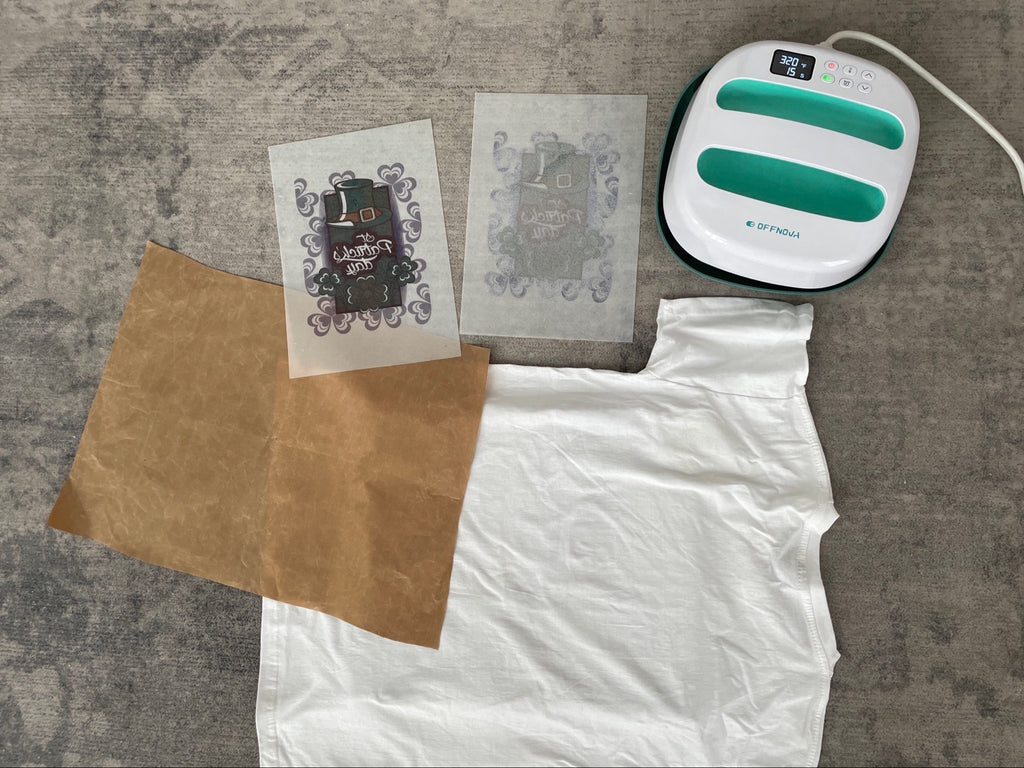Direct-To-Film Printing is revolutionizing the t-shirt printing industry with its cost effective and flexible capabilities. It has been making a splash among those looking for more innovative ways to make unique designs come alive on apparel. Interest in combining sublimation printing and DTF (Direct-to-Film) technology is surging among DIYers, small business owners, and creative entrepreneurs. As they seek out the best way to bring their designs to life with vibrant colors using sublimation hacks, the potential of this dual approach has new users fascinated.
The most popular one is to use sublimation printer to print out the design on the DTF film with the sublimation ink. Those makers replace the sublimation paper with the DTF film. As a result, the design can be successfully transferred onto the 100% cotton fabrics without color fading over time.
In this blog, we are going to guide you through the sublimation hack journey to see what will the results be like. We used DTF printer to print out the same design as well so that we can see their contrast directly. Let’s begin!
Preparation for the test:
① Sublimation printer with sublimation ink
② DTF Printer with DTF pigment ink
③ DTF glitter film sheet
④ 9”x 9”heat press machine
⑤ DTF powder curing oven
⑥ Heat press mat
⑦ Teflon paper
⑧ 100% cotton t-shirt
Download a design
Search St. Patrick’s Day themed design (you can pick design you like) at canva.com. You will see there are lots of related results. Pick one you like and mirror it.
Get the material & printer ready
The DTF film sheet we used is in A4 size and in glitter finish. Load the sheet into the printer. The design should be printed on the matte side. It’s recommended that you can tape film sheet to a piece of copy paper at the top leading edge if it fails to be feed through the printer.
Start to print
Printing settings >> photo paper glossy, high quality. After the design was printed out, the ink on the DTF film sheet was wet. We printed out two pieces of DTF sublimation transfer. One was covered with the DTF powder (roll over the film sheet back and forth to make sure each part would be entirely covered), another was not.
Apply the DTF powder
Get the 9”x9”heat press machine ready. In this test, we used the heat press machine to apply heat on the DTF powder just as most DIYers did. (Temp: 385℉, time: 60s-80s). Actually, it will take longer time to successfully cure the power by using the heat press machine because the heat is easily lost in the non-airtight space.

Transfer the design on the t-shirt
Transfer the design on the 100% cotton t-shirt. For the sublimation DTF transfer, we set the temperature to 360℉, time 50s. For the real DTF transfer, we set the temperature to 320℉, time 30s. Cool peel is necessary for the ‘DTF transfer process’.
Results comparison
- DTF sublimation transfer with powder vs DTF sublimation transfer without powder
The right one is the sublimation ink on the DTF film sheet without powder cured, the left one is the one with powder cured. Obviously, the design on the left looks more vibrant. For the one without DTF powder, it seems that around 50% of the sublimation ink could not be transferred on the 100% cotton t-shirt. But with the DTF powder, it could be nearly 100% transferred.

- Real DTF transfer vs DTF sublimation transfer
The real DTF transfer was printed out with the DTF printer and the DTF ink. The DTF powder was heated by a DTF curing oven. Though the DTF sublimation transfer performs better when the powder is applied, we can still see that the sublimation ink and the powder do not combine well. There appear to be ‘scratches’ in a few places. Instead, the result of the real DTF transfer looks perfect and feels soft and smooth when touching.
Another reason for the less satisfied performance may attribute to the powder curing step where we used a heat press machine to heat the powder in a non-airtight space.
Conclusion
- The sublimation DTF hack does work on 100% cotton t-shirt in some way. The DTF powder plays an important role in it. Without the powder, the DTF film sheet acts like no differently from the sublimation paper.
- The heat press machine can replace the DTF powder curing oven to heat the powder, but the environment condition would be an important factor. It takes longer time to finish the curing step and unstable results are hard to be avoided.
- Sublimation DTF transfer requires a higher temperature and longer heat press time than the real DTF transfer.
- Sublimation DTF transfer still only works on white fabrics because the sublimation ink doesn’t print white.
